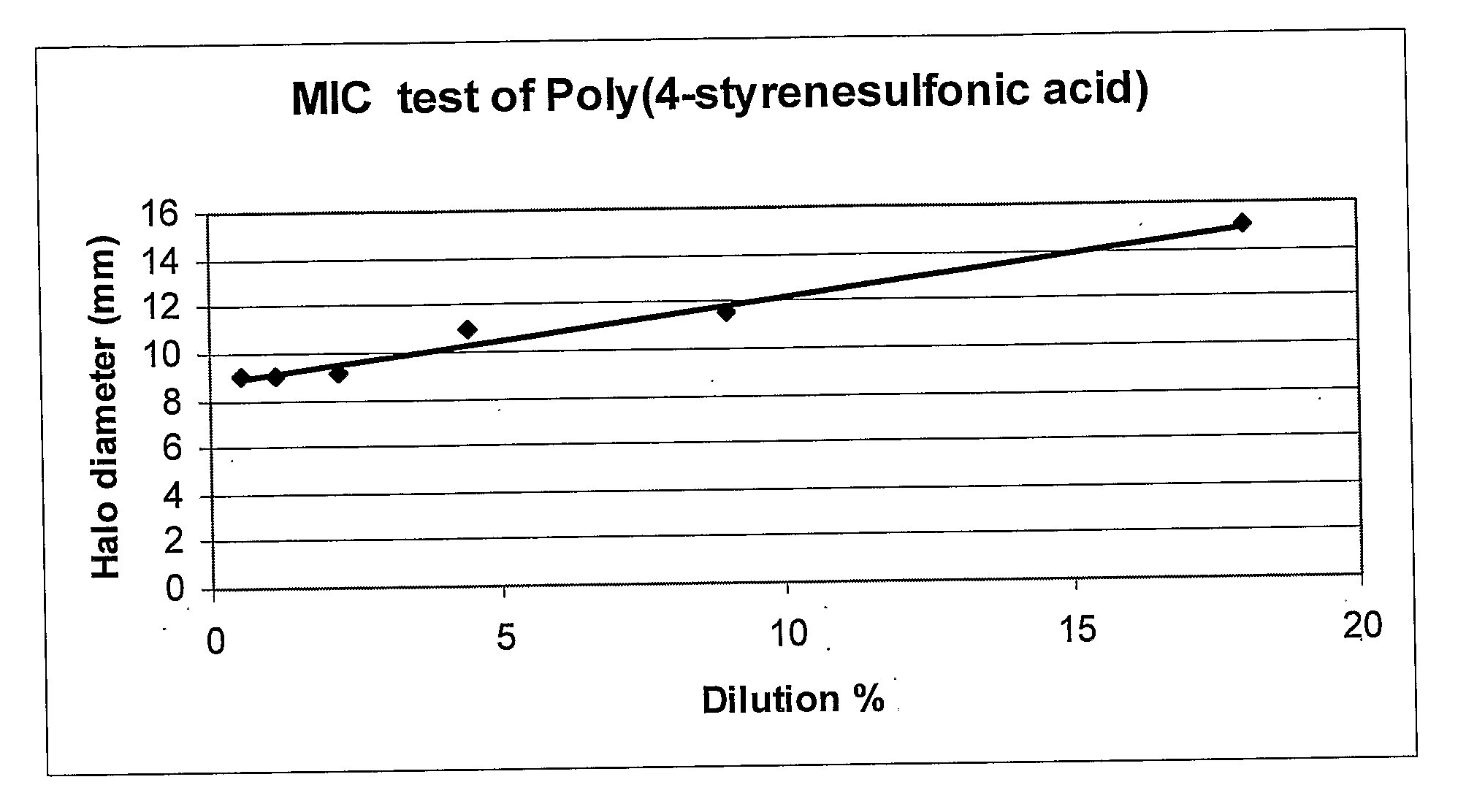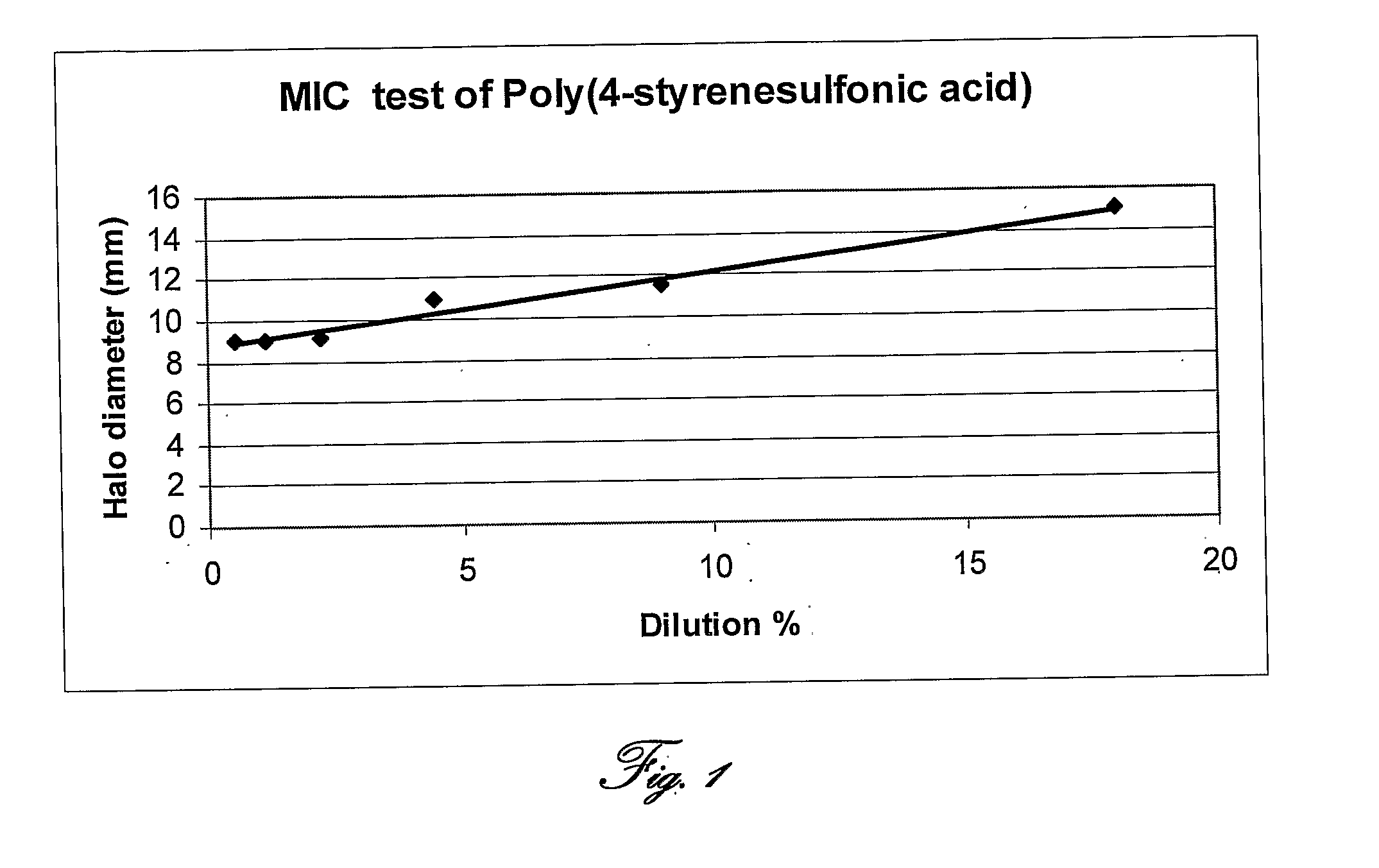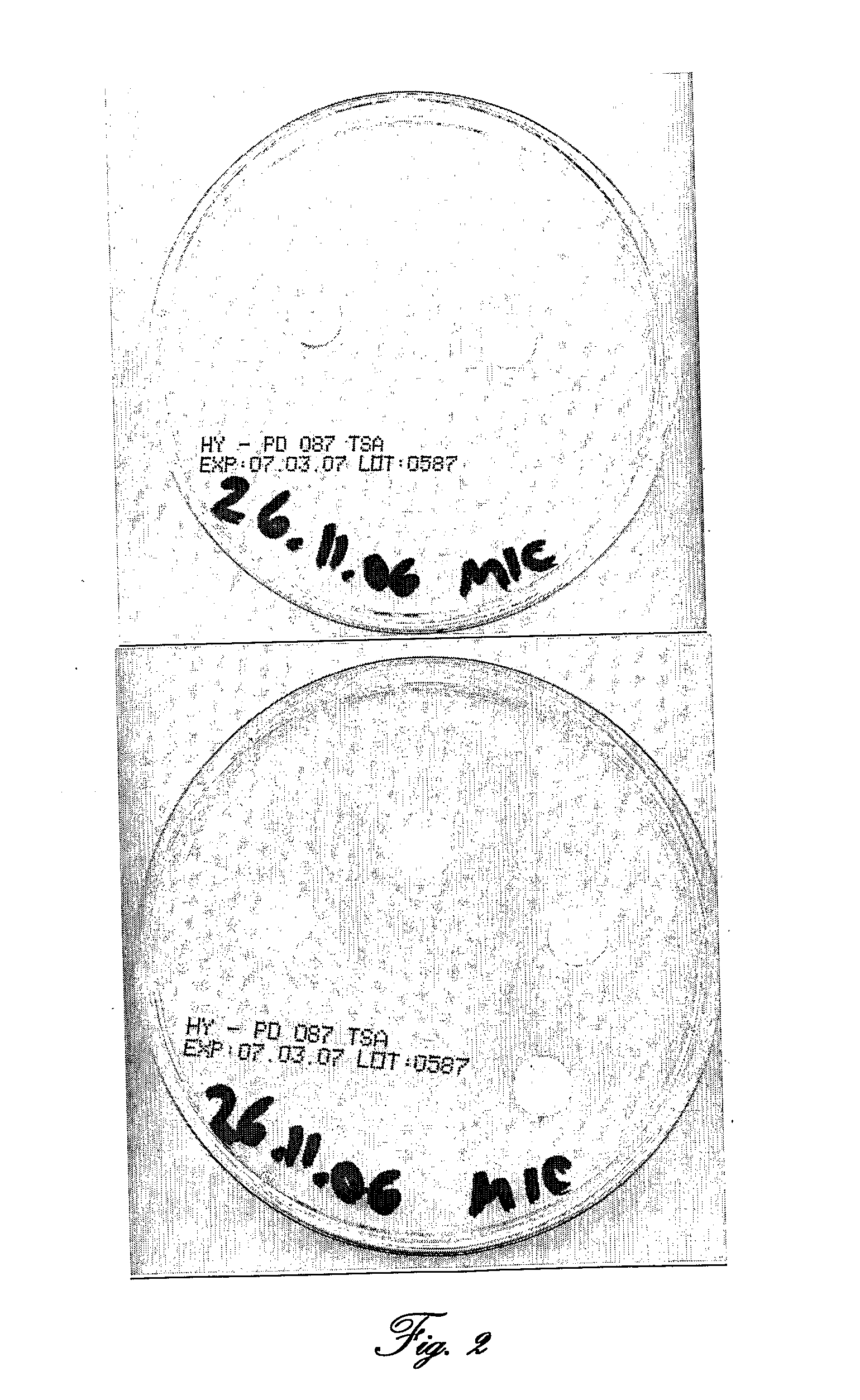Biocidic medical devices, implants and wound dressings
a biocidic, medical device technology, applied in the direction of medical science, lavatory sanitory, catheters, etc., can solve the problems of ltc resistance, ltc resistance, ltc resistance, etc., to achieve the effect of effectively disrupting the ph homeostasis and/or electrical balance, avoiding the development of ltc resistance, and efficiently preserving the ph of the ltc's environment and patient's
- Summary
- Abstract
- Description
- Claims
- Application Information
AI Technical Summary
Benefits of technology
Problems solved by technology
Method used
Image
Examples
example 1
[0126]AntiBacterial Tests
[0127]Materials and Methods
[0128]Staphylococcus caseolyticus was grown in TSB medium to a concentration of 108 cfu / ml. Poly-(4-styrenesulfonic acid) (PSSA; Aldrich) solution (18% wt / vol. in water) consisting of 70 kD particles had been serial-double-diluted from 1:1 up to 1:32. Standard MIC test was carried out by placing antibiotic disks soaked with double-diluted Poly-(4-styrenesulfonic acid) on TSA plates inoculated with starter culture of S. caseolitycus. Plates were incubated over night in 30° C.
[0129]Results
[0130]Reference is now made to FIG. 1, which shows a standard MIC test with double-diluted Poly-(4-styrenesulfonic acid) on TSA plates inoculated with starter culture of S. caseolitycus; and to FIG. 2, presenting photographs of standard MIC test with double-diluted Poly-(4-styrenesulfonic acid) on TSA plates inoculated with starter culture of S. caseolitycus.
[0131]Table 2 and FIGS. 1 and 2 shows an antimicrobial activity of PSSA against S. caseolyt...
example 2
[0133]Bacterial Resistance Test
[0134]Materials and methods—Staphylococcus caseolyticus was grown in TSB medium to a concentration of 108 cfu / ml. Poly-(4-styrenesulfonic acid) (Aldrich) solution (18% wt / vol. in water) consisting of 70 kD particles had been serial-double-diluted from 1:1 up to 1:32. Standard MIC test was carried out by placing antibiotic disks soaked with double-diluted Poly-(4-styrenesulfonic acid) (PSSA) on TSA plates inoculated with starter culture of S. caseolitycus. Plates were incubated over night in 30° C.
[0135]Samples of sensitive bacteria from inner and outer halo (cf. FIG. 3) had been taken with a needle stick and were seeded separately in TSB for a few hours and spread again on a new TSA plate for another MIC test with new Poly-(4-styrenesulfonic acid) disks. This test was performed again and again up to the 12th bacterial generation.
[0136]Result Reference is now made to FIG. 3, showing a standard MIC test with double-diluted PSSA on TSA plates inoculated w...
example 3
[0137]Antimicrobial Activity of Amberlite 120, Amberlite (H+-form), Amberlite+Ascorbic Acid and PSSA Applied to Standard Plaster (Band-Aid).
[0138]Materials and Methods
[0139]Amberlite 120, Amberlite (H+form), Amberlite+Ascorbic acid and PSSA were applied to standard, commercially available plaster (band-aid) and placed on TSA plates inoculated with starter culture of S. caseolitycus.Plates were incubated over night in 30° C. Antimicrobial activity was determined by the bacterial growth inhibition halos formed around application site.
[0140]Results
[0141]Reference is now made to FIG. 4, showing the antimicrobial activity of Amberlite 120 and Amberlite (H+form) applied to standard, commercially available plaster against S. caseolitycus, to FIG. 5, showing the antimicrobial activity of Amberlite 120 +Ascorbic acid applied to standard, commercially available plaster against S. caseolitycus; and to FIG. 6, presenting the antimicrobial activity of Poly-(4-styrenesulfonic acid) (PSSA) applied...
PUM
 Login to View More
Login to View More Abstract
Description
Claims
Application Information
 Login to View More
Login to View More - R&D
- Intellectual Property
- Life Sciences
- Materials
- Tech Scout
- Unparalleled Data Quality
- Higher Quality Content
- 60% Fewer Hallucinations
Browse by: Latest US Patents, China's latest patents, Technical Efficacy Thesaurus, Application Domain, Technology Topic, Popular Technical Reports.
© 2025 PatSnap. All rights reserved.Legal|Privacy policy|Modern Slavery Act Transparency Statement|Sitemap|About US| Contact US: help@patsnap.com



